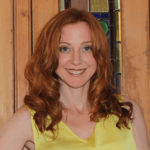What is Disordered Thinking? And Is It a ‘Thought Disorder’?

by Andrea M. Darcy
Are you thoughts so jumbled you are worried there might be something wrong? Disordered thinking is often related to diagnosable and treatable mental health disorders.
What is disordered thinking?
It is what it sounds like — thinking that has become disorganised and hard to follow.
If you have disordered thinking, you can’t control your thoughts or express yourself well, which can make relating with others difficult.
Symptoms of disordered thinking
Symptoms can see you:
- unable to think straight
- Feeling like your head is full of fog or sand
- struggling to concentrate
- rapidly jumping from one subject to the next
- not finishing your thoughts
- speaking in a confusing way: too fast, too many pauses, drifting off
- losing a logical order to your ideas.
Why does it matter if my thoughts are a mess?
For starters, when we can’t think well we can’t communicate well. And when we can’t communicate well, it affects our ability to cope. We can’t ask for what we need, or state how we feel, or what is upsetting us. Relating to others becomes difficult, which can leave us feeling shunned and rejected.
And in some cases disorganised thinking can be the beginning of a more serious mental health disorder like schizophrenia.
Related mental health issues

photo by: Joseph Frank
Disordered thinking is connected to severe depression, which can leave you feeling so foggy and confused it can be hard to form useful thoughts, or to speak clearly.
It can also form a part of mania, where your thinking can get too fast, and you can’t keep up with your own ideas.
But disordered thinking is most commonly known as a symptom of schizophrenia. Here it is usually (but not always) joined by delusions (believing things are real that aren’t) and hallucinations (sensing things to be there that aren’t).
What is a thought disorder?
The term ‘thought disorder’ can be confusing. It’s called a disorder, yes. But it’s not currently a standalone diagnosis. Nor is it an actual listed, standalone disorder in the DSM-V or the ICD-10, the two most used manuals for diagnosing mental health disorders. It’s instead more of a feature of other disorders, or used as a synonym for severely disorganised thinking.
At one point, the argument was made for ‘thought disorders’ to refer to several different issues. In the 1980s, neuroscientist Nancy C. Andreasen argued that thought disorder “has often been treated as if it were unitary, but in fact it is composed of a number of different language behaviours.” She identified no less than 18 different types of thought disorders, along with a scale that attempted to measure them.
But nowadays, when psychiatrists and mental health professionals say ‘thought disorder’, they are generally just talking about disorganised thinking that is severe enough it affects the way someone speaks and presents themselves.
If it helps, see thought disorders as ‘sub disorders’, a symptom of other listed major mental health disorders.
Diagnosis in the UK
Here in the UK, if you go see your GP, you won’t come home with a diagnosis of ‘thought disorder’ but with a related diagnosis like severe depression, schizophrenia, or psychotic disorder.
The National Institute of Health and Care Excellence (NICE), which is used to diagnose in Britain, makes no mention of thought disorders. It instead offers a ‘Guide to Psychosis and Schizophrenia‘.
Formal thought disorder
This is a more exact term for thought disorder, and is again often used as a synonym for severely disorganised thinking.

By: cometstarmoon
Formal thought disorder is about the form your thoughts take, and is related to organisation and expression.
It means your thoughts are so disorganised and messy it affects the way you talk and write, and that this is not caused by a medical condition.
It’s not the same as being tired or depressed and speaking differently. Or of having a short episode of talking strangely, such as after a shock like an accident. If you have formal thought disorder, your talking is inconsistent and incoherent for no known reason, and it has been for some time.
Formal thought disorder can include things like:
- talking too fast and loud, or in a garbled manner
- strange pauses
- incoherent tangents of thought
- excessive detail
- or talking very little and in a vague way that confuses others
- using outdated, formal, or strangely elevated language
- repeating certain words again and again
- being more obsessed with the sound of words than what they mean
- making words up, or using the wrong words to explain things.
Content thought disorder
‘Content thought disorder’ is about what you think about. Your thoughts are illogic and confused. An example is having delusions. You might believe you are being persecuted by aliens, or that everyone is secretly out to get you. You might not talk about this, but you think it.
If you have schizophrenia, you could have both formal and content thought disorders.
This is confusing…
There is some irony in the fact that mental health professionals and the mental health industry has made their description and diagnosis of disorganised thinking, well… disorganised. And highly confusing.
Perhaps neuroscientist Andreasen should have been listened to when she actually identified this confusion. “Because the term “formal thought disorder” has been so misunderstood and misused, it is recommended that it no longer be used,” she suggested. She pointed out that, “Most of them are in fact disorders of communication…[that] can be better conceptualised as “disorders of thought, language, and communication.”
But the trouble is also that we simply don’t have a standard ‘normal’ for language we can compare everything to, when it is influenced by culture, amongst many other things. As a 2017 review of research around disordered thinking explains,
“Language “distortion” is a sign—in the medical sense—that is potentially measurable but currently without a universally accepted measure.”
What really matters about disordered thinking
The thing to keep in mind is mental health terms and diagnoses are not an exact science. They are just words created by mental health professionals to more easily describe groups of people with similar issues. And, as this article shows, terms and diagnoses can change with the times.
What matters is that if your thinking, or that of your loved one, means they can’t communicate, connect, and cope? Then it’s time to seek help.
Worry you have a thought disorder and want to talk to someone who is informed? We connect you to a team of highly regarded mental health experts in London. Or use our online booking platform to find a UK-wide therapist now.
 Andrea M. Darcy is a health and wellbeing writer as well as mentor, trained in person-centred counselling and coaching. She often writes about trauma, relationships, and ADHD. Find her on Instagram @am_darcy
Andrea M. Darcy is a health and wellbeing writer as well as mentor, trained in person-centred counselling and coaching. She often writes about trauma, relationships, and ADHD. Find her on Instagram @am_darcy




